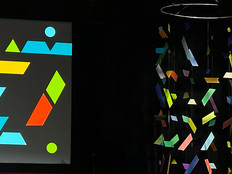50 Striking Statistics About Distance Learning in Higher Education
Distance and online learning is a big deal in higher education. Not only are more students taking online classes at traditional four-year colleges, but also the rise of innovative for-profit online schools is changing the landscape. We all know it’s happening, but now we can quantify the affect of online learning with these 50 striking statistics.
64%
of full-time faculty at community colleges teach distance education classes; part-time faculty teach 35%. Source.
72%
completion rate for online classes at community colleges, compared to 76% for traditional face-to-face courses. Source.
150%
increase in the number of students selecting distance-learning courses as a part of their regular college curriculum between 1998 and 2008. Source.
18%
of undergraduate students are predicted to receive 80% or more of their education through online courses by 2013. Source.
25%
of students enrolled in at least one online course at the associate’s degree level, compared to 17% at the bachelor’s degree level. Source.
71%
of leaders of for-profit colleges and universities report that their institutions offer classes online, and more than half (54%) say these classes offer the same value as classes taken in person. Source.
61%
of the presidents of four-year liberal arts colleges report that their institutions offer classes that are taught exclusively online, compared to 79% of presidents of research universities and 82% of those at community colleges. Source.
15%
of college students who have taken a class online have earned a degree entirely online. Source.
39%
of all adults who have taken a class online say the format’s educational value is equal to that of a course taken in a classroom. Source.
65%
of students have taken online classes. Source.
71%
of students believe that virtual learning provides increased flexibility to take classes. Source.
62%
of students believe that virtual learning provides the opportunity for professional adults to take classes while working full time. Source.
72%
of university IT staff believe that virtual learning is essential to a 21st-century classroom, compared to 63% of administrators. Source.
59%
of college IT managers surveyed say their institution offers online learning. Source.
48%
of faculty members believe that virtual learning is essential to a 21st-century classroom, compared to 53% of students. Source.
51%
of college presidents say online courses provide equal value to classroom experiences. Source.
29%
of the public says online courses offer an equal value compared with courses taken in a classroom. Source.
77%
of college presidents report that their institutions offer online courses. Source.
89%
of four-year public colleges and universities offer online classes, compared to 60% of four-year private schools. Source.
60%
of four-year private colleges and universities offer online classes. Source.
23%
of college graduates report that they have taken a class online. Source.
50%
of college presidents predict that 10 years from now most of their students will take classes online. Source.
91%
of two-year colleges offer online courses. Source.
58%
of college and universities that offer online courses grant degrees for which all the course work can be completed online. Source.
88%
of residential colleges and universities offer online courses to students who live on campus. Source.
15%
of college presidents report that more than half of their undergraduate students have taken an online course. Source.
90%
of online institutions based at community colleges use student evaluations. Source.
64%
of online institutions based at community colleges use some type of administrative review. Source.
75%
of community colleges develop their own content for online courses. Source.
18%
of community colleges use publisher content for online courses. Source.
5%
of community colleges use contract or license materials from content providers. Source.
40%
of community colleges own and maintain their own servers for their online classes. Source.
36%
of community colleges outsourced their server needs to a third party, such as a learning management system provider, publisher or IT provider. Source.
20%
of community colleges shared servers with others, such as a state system, district or consortium. Source.
70%
of community colleges currently offer an online student orientation for distance education classes. Source.
54%
of community colleges currently offer online plagiarism evaluations for distance education classes. Source.
90%
of community colleges offer a dedicated website for their distance education program and students. Source.
85%
of community colleges offer online admission. Source.
91%
of community colleges currently offer online registration for their classes. 40% of institutions reported that they charge students an additional per-credit fee to take distance education classes — the minimum collected was $2, the maximum was $80, with a median average of $22. Source.
15%
of community colleges offer blended/hybrid courses. Source.
3%
of community colleges offer interactive video (IAV) courses. Source.
53%
of community colleges continue to increase the number of blended/hybrid courses each term. Source.
6.52%
growth of distance education enrollments from fall 2011 to fall 2012. Source.
40%
of community colleges have deactivated their interactive video (IAV) courses or have never offered IAV courses. Source.
26%
of community colleges are continuing to increase the number of IAV courses each term. Source.
60%
of faculty members at community colleges believe that faculty participation in training programs for distance education is mandatory. Source.
28%
of community colleges limit the number of online class sections a full-time faculty member can teach each term. Source.
52%
of students at community colleges who take online courses are traditional students. Source.
63%
of students at community colleges who take online courses are female and 36% are male. Source.
27%
of distance learners are employed full-time. Source.
Let us know your thoughts on distance learning in the Comments section below.








